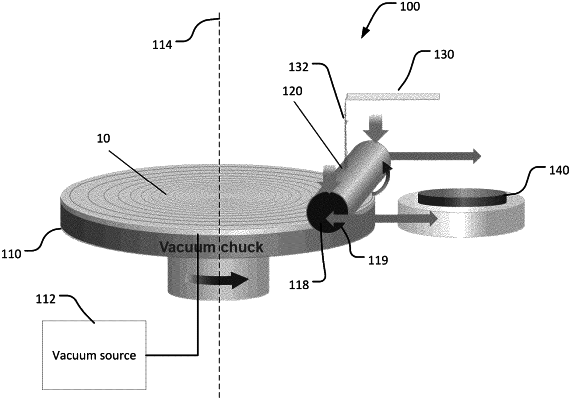| CPC B24B 37/042 (2013.01) [B24B 37/11 (2013.01)] | 15 Claims |

|
1. A polishing apparatus, comprising:
a platen configured to receive and hold a substrate in a plane;
a polishing pad affixed to a cylindrical surface of a rotary drum;
a first actuator to rotate the rotary drum about a first axis parallel to the plane;
a second actuator to bring the polishing pad on the rotary drum into contact with only an annular region adjacent an edge of the substrate;
a port for dispensing a polishing liquid to an interface between the polishing pad and the substrate;
an in-situ monitoring system to monitor a thickness of the substrate in the annular region and generate two or more edge-thickness profiles of the annular region; and
a controller configured to;
compare a first edge-thickness profile to a second edge-thickness profile to determine an edge-thickness difference,
cause the platen to rotate such that the substrate rotates about an axis perpendicular to the plane and aligned with a centerpoint of the substrate;
cause the second actuator to bring the polishing pad into contact with the annular region of a front face of the substrate by adjusting a position of a centerpoint of the rotary drum only along a segment extending from the axis to the centerpoint of the rotary drum wherein the first axis of the rotary drum is parallel to the polishing pad and wherein ends of the polishing pad are spaced radially inward of an edge of the substrate;
cause the port to supply the polishing liquid; and
cause the first actuator to generate relative motion between the polishing pad and the substrate so as to polish an under-polished region of the annular region of the substrate without removing material from at least some of the front face of the substrate outside of the annular region, the relative motion including at least rotating the rotary drum about the first axis while pressing the rotary drum against the annular region of the front face of the substrate, and
cause the second actuator to bring the polishing pad out of contact with the annular region when the edge-thickness difference is below a threshold.
|